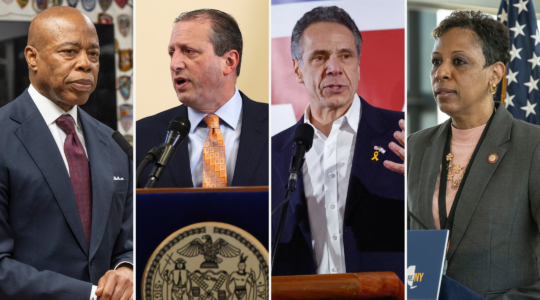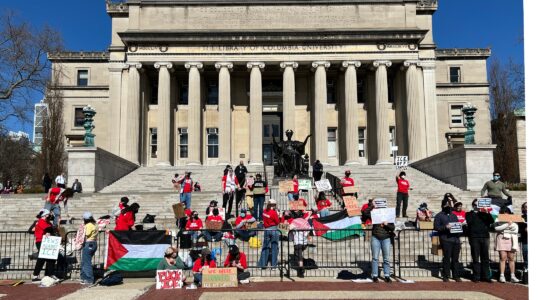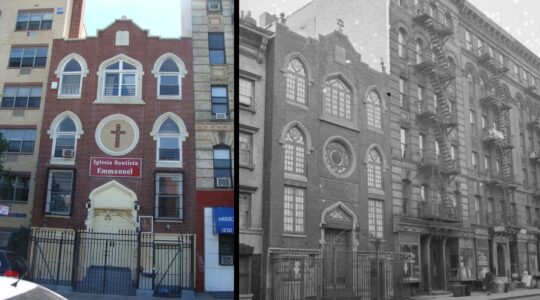Israel’s summer has offered a thunderclap of ominous words — “Judenrein,” “ethnic cleansing,” the fears of 1939, 1929, and 2009 entwined in a cyclonic vortex of memories and fear.
Prime Minister Netanyahu was quoted as saying, “Judea and Samaria cannot be Judenrein,” the Nazi term for territory emptied of Jews. Also this summer, Newsweek reported a memo from The Israel Project that suggested that it would be tactically clever to accuse “those who advocate removing Jewish settlements of promoting ‘a kind of ethnic cleansing to move all Jews’ from the West Bank.” J Street responded with an e-mail charging that using terms such as “ethnic cleansing” is “incendiary and dangerous.”
The words may be incendiary but are they legitimate? Jews have known ethnic cleansings before.
There was one this week in Hebron, back in 1929.
The crux of the argument against the settlements, often cited in The New York Times, and elsewhere, is the Fourth Geneva Convention that precludes a country from having its civilians settle in land that was conquered in war. But this August, every Israeli paper is commemorating 1929 and a murderous Arab riot that essentially ended — or “ethnically cleansed,” if you will — a Jewish community dating back to biblical times. If Jews were returning to homes and buildings that they only left after an ethnic cleansing, rather than first arriving after a military conquest, is it still a violation of the Geneva Convention?
Although every major American paper has written about the settlements this summer, sometimes at length, stirred by the Obama administration that has made the “freezing” of settlements the crux of a peace plan, so far we haven’t seen a single American paper that has pointed out that some of the settlements, especially Hebron, are hardly settlements but old Jewish cities.
That perspective wasn’t always the case. For years, when Jewish pioneers first returned to the Holy Land, the Times covered Hebron as a Jewish city rather than a settlement. When U.S. Ambassador Henry Morgenthau visited Hebron in 1914, the Times (July 12, 1914) reported that the streets were festive and decorated, “Jewish school children sang songs of welcome,” with no indication that Hebron’s Jewish community was anything but indigenous. The Times called Hebron’s Tomb of the Patriarchs by its Hebrew name, the Machpela.
In World War I, when British troops first entered the area, the Times (Dec. 8, 1917) again emphasized Hebron as a Jewish place, with a headline and story pointing out that “King David resided here for the first seven years of his reign.”
Then we come to the day that ended Jewish Hebron even more than Kristallnacht ended Jewish Berlin. On Aug. 26, 1929, the Times front page ran a three-column headline, “12 Americans Killed By Arabs In Hebron.” Jewish students used to go there the way “gap year” students now flock to Jerusalem. A Brooklyn student was “one of 50 victims in sudden attack on [the Slabodka] rabbinical college.” The death toll rose to 67.
There were thousands of Jews in Hebron and then there were none. British “police headquarters here,” noted the Times, “are sending trucks to remove all the remaining Jews from Hebron.”
The Times (Aug. 27, 1929) reported: “The hospital in Hebron was burned.” It was a regular Jewish city, with banks, hospitals, and yeshivas. The headline: “Attack on rabbinical college was savage — 18 killed in banker’s house.” According to the story, “the barbarity of the attackers knew no bounds.” One rabbi “was burned alive by the Arabs.” And the next day: “Victims killed like sheep” in “the first capital of the Kingdom of Judah.” The remaining Jews were gathered in police headquarters, awaiting evacuation.
The dead Jews that were brought from Hebron to Jerusalem were “so mutilated,” said the Times, “that no one was permitted to view them.” A “general mourning” was “proclaimed throughout all synagogues.”
So, dear reader, does that sound like an “ethnic cleansing,” comparable to Kosovo or Rwanda, or not? And if a Rwandan used the phrase in fearful conversation 80 years from now, would we understand or would we call it “incendiary”?
The American media, so very supportive of Obama’s aims and anti-settlement stance, has sent reporters to the West Bank, but they begin the story of the settlers with 1967. If settlers are just “occupiers” and aliens, only arriving for the first time with a conquering army, then the story of 1929 is inconvenient for the anti-settler media. Like Bogart says in “Casablanca,” “I wouldn’t bring that up if I were you. It’s poor salesmanship.”
But in Israel, where trust in Obama is almost at rock bottom, the papers have embraced the anniversary and brought out the survivors, as American Jewish papers do with Holocaust survivors on Yom HaShaoah.
Haaretz (Aug. 10) told of a Hebron survivor who, like a Shoah survivor, kept her silence about the horrors she witnessed until her children begged her, “Now you must talk. Tell us exactly what happened that day.”
The Jerusalem Post (Aug. 10) headlined “80 years on, the scars still show” the story of Shlomo Slonim, 81, who survived as a 1-year-old, though slashed by an Arab’s knife. His father, mother and brother were killed when Arabs burst into the Slonim home and killed 24 Jews with knives and machetes.
According to the J-Post, “The massacre destroyed the Hebron Jewish community, whose roots go back to biblical times. … Some Jews tried to return to Hebron after the massacre, but the British removed them in 1936. It was only in 1979 that Jews returned to live in Hebron.”
Those returning Jews are some of the “settlers” that you’ve heard so much about. The ones who are supposed to “freeze.”
The New York Jewish Week brings you the stories behind the headlines, keeping you connected to Jewish life in New York. Help sustain the reporting you trust by donating today.




